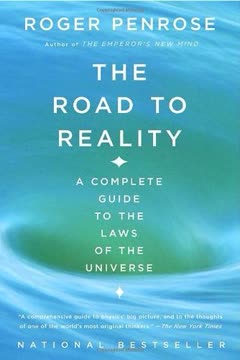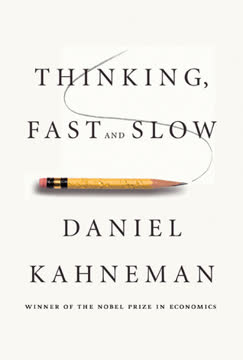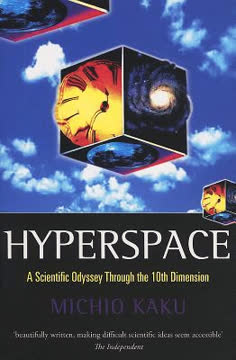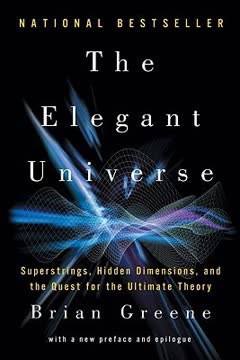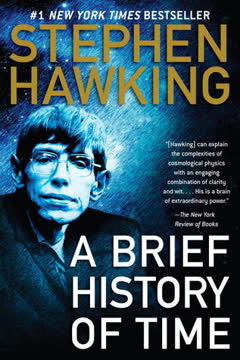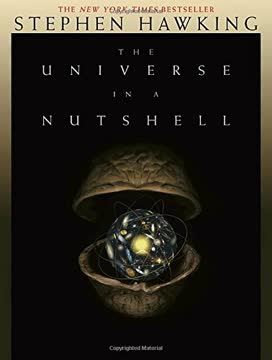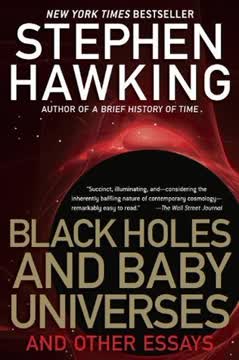मुख्य निष्कर्ष
1. समय और स्थान निरपेक्ष नहीं हैं
"समय को ऐसा माना जाता था जैसे वह एक सीधी रेलवे लाइन हो जिस पर केवल एक दिशा में या दूसरी दिशा में ही चलना संभव हो।"
क्रांतिकारी दृष्टिकोण। आइंस्टीन के सापेक्षता सिद्धांत ने हमारे समय और स्थान की समझ को पूरी तरह बदल दिया। अब इन्हें स्थिर और निश्चित अवधारणाओं के बजाय सापेक्ष, गतिशील आयाम माना जाता है, जिन्हें अलग-अलग पर्यवेक्षक अलग-अलग तरीके से अनुभव कर सकते हैं।
मुख्य निष्कर्ष:
- समय सार्वभौमिक नहीं, बल्कि प्रत्येक पर्यवेक्षक के लिए व्यक्तिगत होता है
- अलग-अलग गति से चलने वाले पर्यवेक्षक समय को अलग-अलग मापेंगे
- प्रकाश की गति सभी पर्यवेक्षकों के लिए स्थिर रहती है
प्रयोगात्मक प्रमाण। मिशेलसन-मॉर्ले प्रयोग जैसे अवलोकनों ने दिखाया कि प्रकाश की गति पर्यवेक्षक की गति से प्रभावित नहीं होती, जिससे पारंपरिक निरपेक्ष समय और स्थान की धारणाओं को चुनौती मिली।
2. ब्रह्मांड की एक शुरुआत है और यह विस्तारशील है
"यदि ब्रह्मांड को निषेध सिद्धांत के बिना बनाया गया होता, तो क्वार्क अलग-अलग, स्पष्ट प्रोटॉन और न्यूट्रॉन नहीं बना पाते।"
बिग बैंग सिद्धांत। लगभग 13.8 अरब वर्ष पहले ब्रह्मांड अत्यंत घने और गर्म अवस्था से उत्पन्न हुआ, जो तेजी से फैलता गया और जटिल भौतिक प्रक्रियाओं के माध्यम से आकाशगंगाएँ, तारे और जटिल संरचनाएँ बनाईं।
ब्रह्मांडीय विकास:
- प्रारंभिक अवस्था अत्यंत गर्म और समान थी
- धीरे-धीरे ठंडा होने पर परमाणु संरचनाएँ बनीं
- विस्तार जारी है, संभवतः अनंत काल तक
- गुरुत्वाकर्षण के कारण आकाशगंगाएँ बनीं
प्रेक्षणीय पुष्टि। एडविन हबल ने पाया कि दूर की आकाशगंगाएँ हमसे दूर जा रही हैं, जो विस्तारशील ब्रह्मांड के मॉडल का अनुभवजन्य प्रमाण है।
3. क्वांटम यांत्रिकी अनिश्चितता और संभाव्यता लाती है
"क्वांटम यांत्रिकी किसी अवलोकन के लिए एक निश्चित परिणाम नहीं बताती, बल्कि कई संभावित परिणामों की भविष्यवाणी करती है और बताती है कि प्रत्येक की संभावना कितनी है।"
संभाव्यात्मक ब्रह्मांड। पारंपरिक भौतिकी के विपरीत, क्वांटम यांत्रिकी बताती है कि मौलिक कण संभाव्यात्मक अवस्थाओं में होते हैं, जहाँ किसी भी अवलोकन के कई संभावित परिणाम हो सकते हैं।
मुख्य क्वांटम सिद्धांत:
- कण एक साथ कई अवस्थाओं में मौजूद हो सकते हैं
- अवलोकन कण की अवस्था को प्रभावित करता है
- स्थिति और वेग का सटीक मापन असंभव है
- प्रकृति में यादृच्छिकता अंतर्निहित है
क्रांतिकारी प्रभाव। यह दृष्टिकोण ब्रह्मांड के निर्धारक (डिटर्मिनिस्टिक) स्वरूप को चुनौती देता है और बताता है कि मौलिक अनिश्चितता वास्तविकता की मूल विशेषता है।
4. गुरुत्वाकर्षण ब्रह्मांड की संरचना को आकार देता है
"गुरुत्वाकर्षण चार बलों में सबसे कमजोर है; यह इतना कमजोर है कि यदि इसके दो विशेष गुण न होते—यह दूर तक प्रभाव डाल सकता है और हमेशा आकर्षित करता है—तो हम इसे महसूस भी नहीं कर पाते।"
गुरुत्वाकर्षण का प्रभाव। सबसे कमजोर मौलिक बल होते हुए भी, गुरुत्वाकर्षण अपने दूरगामी और संचयी प्रभावों से ब्रह्मांडीय संरचनाओं को आकार देता है।
गुरुत्वाकर्षण की विशेषताएँ:
- सभी पदार्थों पर सार्वभौमिक रूप से कार्य करता है
- आकर्षित करता है, विकर्षित नहीं करता
- बड़े पैमाने पर ब्रह्मांडीय संरचनाओं को निर्धारित करता है
- ब्लैक होल और ब्रह्मांडीय विकास को समझने में मूलभूत है
आइंस्टीन का योगदान। सामान्य सापेक्षता ने गुरुत्वाकर्षण को बल के बजाय स्थान-काल के वक्रता के रूप में प्रस्तुत किया, जिससे हमारी समझ में क्रांतिकारी बदलाव आया।
5. ब्लैक होल वास्तव में काले नहीं होते
"ब्लैक होल विज्ञान के इतिहास में उन कुछ मामलों में से हैं जहाँ एक सिद्धांत को अवलोकन के बिना ही गणितीय मॉडल के रूप में विस्तार से विकसित किया गया।"
क्वांटम ब्लैक होल गुण:
- विकिरण उत्सर्जित करते हैं (हॉकिंग विकिरण)
- सीमित तापमान रखते हैं
- धीरे-धीरे वाष्पित हो सकते हैं
- अत्यंत गुरुत्वाकर्षणीय वातावरण का प्रतिनिधित्व करते हैं
सैद्धांतिक सफलता। हॉकिंग ने दिखाया कि क्वांटम यांत्रिकी ब्लैक होल को कण उत्सर्जित करने की अनुमति देती है, जो पहले की समझ को चुनौती देता है।
प्रेक्षणीय महत्व। ब्लैक होल गुरुत्वाकर्षण, क्वांटम यांत्रिकी और स्थान-काल के मौलिक सिद्धांतों की जांच के लिए अद्वितीय प्रयोगशालाएँ हैं।
6. मौलिक बलों का एकीकरण संभव है
"अंततः, उम्मीद की जाती है कि एक पूर्ण, सुसंगत, एकीकृत सिद्धांत मिलेगा जो इन सभी आंशिक सिद्धांतों को समीकरण के रूप में समाहित करेगा।"
एकीकरण की खोज। वैज्ञानिक गुरुत्वाकर्षण, विद्युतचुंबकीय, मजबूत और कमजोर नाभिकीय बलों को एक ही सुसंगत ढांचे में समाहित करने का प्रयास कर रहे हैं।
सैद्धांतिक प्रयास:
- स्ट्रिंग सिद्धांत
- क्वांटम गुरुत्वाकर्षण मॉडल
- ग्रैंड यूनिफाइड थ्योरी (GUTs)
- अतिरिक्त आयामों की खोज
चुनौतियाँ। वर्तमान सिद्धांत क्वांटम यांत्रिकी और गुरुत्वाकर्षण को सूक्ष्म स्तर पर पूरी तरह मेल नहीं खिला पाते।
7. समय की दिशा और एंट्रॉपी
"अव्यवस्था समय के साथ बढ़ती है क्योंकि हम समय को उस दिशा में मापते हैं जिसमें अव्यवस्था बढ़ती है।"
ऊष्मागतिकीय समय की दिशा। ब्रह्मांड अव्यवस्था की ओर बढ़ता है, जिससे एक मूलभूत "समय की दिशा" बनती है जो अतीत और भविष्य को अलग करती है।
मुख्य समय की दिशाएँ:
- ऊष्मागतिकीय दिशा (एंट्रॉपी वृद्धि)
- मनोवैज्ञानिक दिशा (स्मृति की प्रगति)
- ब्रह्मांडीय दिशा (ब्रह्मांड का विस्तार)
दार्शनिक प्रभाव। हमारा समय का अनुभव ब्रह्मांड की बढ़ती जटिलता और यादृच्छिकता से गहराई से जुड़ा है।
8. ब्रह्मांड स्वयं में संपूर्ण हो सकता है
"ब्रह्मांड पूरी तरह से आत्मनिर्भर होगा और अपने बाहर की किसी भी चीज़ से प्रभावित नहीं होगा। इसे न बनाया जाएगा, न नष्ट किया जाएगा। यह बस होगा।"
नो-बाउंडरी प्रस्ताव। ब्रह्मांड बाहरी कारणों के बिना, क्वांटम उतार-चढ़ाव से उत्पन्न हो सकता है, जिसमें गणितीय संगति अंतर्निहित है।
सैद्धांतिक विचार:
- स्थान-काल सीमित लेकिन बिना सीमा के हो सकता है
- बाहरी सृष्टिकर्ता की आवश्यकता नहीं
- अंतर्निहित गणितीय नियमों द्वारा संचालित
गंभीर दृष्टिकोण। यह पारंपरिक धार्मिक और दार्शनिक विचारों को चुनौती देता है।
9. वैज्ञानिक सिद्धांत अवलोकन के गणितीय मॉडल हैं
"वैज्ञानिक सिद्धांत केवल एक गणितीय मॉडल है जो हम अपने अवलोकनों का वर्णन करने के लिए बनाते हैं: यह केवल हमारे मन में मौजूद होता है।"
वैज्ञानिक पद्धति। सिद्धांत मानव प्रयास हैं जो अवलोकनीय घटनाओं का गणितीय वर्णन और पूर्वानुमान करते हैं, और ये अस्थायी तथा विकसित होते रहते हैं।
सिद्धांत की विशेषताएँ:
- पूर्वानुमान क्षमता
- अनुभवजन्य परीक्षणीयता
- संशोधन के अधीन
- वास्तविकता के अनुमान
ज्ञान की विनम्रता। वैज्ञानिक ज्ञान को अंतिम सत्य नहीं, बल्कि समझ की निरंतर प्रक्रिया माना जाता है।
10. मानव अस्तित्व एक अद्भुत ब्रह्मांडीय संयोग है
"अद्भुत तथ्य यह है कि इन संख्याओं के मान इतने सूक्ष्म रूप से समायोजित हैं कि जीवन का विकास संभव हो सका।"
एंथ्रोपिक सिद्धांत। हमारा अस्तित्व ब्रह्मांडीय स्थिरांकों और भौतिक नियमों के अत्यंत सटीक संयोजन पर निर्भर है।
ब्रह्मांडीय असंभवता:
- मौलिक स्थिरांकों में मामूली बदलाव जीवन को असंभव बना देते
- जटिल संरचनाएँ सरल प्रारंभिक अवस्थाओं से उभरती हैं
- मानव चेतना एक असामान्य ब्रह्मांडीय परिणाम है
दार्शनिक चिंतन। यह हमारे ब्रह्मांड की यादृच्छिकता और संभावित उद्देश्य दोनों को उजागर करता है।
अंतिम अपडेट:
FAQ
What's "A Brief History of Time" about?
- Exploration of the Universe: "A Brief History of Time" by Stephen Hawking explores the nature of the universe, discussing its origins, structure, and eventual fate.
- Complex Concepts Simplified: The book aims to explain complex scientific concepts like black holes, the big bang, and quantum mechanics in a way that is accessible to non-scientists.
- Unified Theory: Hawking discusses the quest for a unified theory that combines general relativity and quantum mechanics to explain all physical aspects of the universe.
- Philosophical Implications: It also delves into the philosophical implications of scientific discoveries, questioning the role of God and the nature of time.
Why should I read "A Brief History of Time"?
- Understanding the Universe: It provides a comprehensive overview of the universe's workings, making it essential for anyone interested in cosmology and physics.
- Accessible Science: Hawking's ability to simplify complex ideas makes it a great read for those without a scientific background.
- Intellectual Curiosity: The book challenges readers to think about profound questions regarding existence, time, and the universe.
- Cultural Impact: As a bestseller, it has influenced both scientific and popular culture, making it a significant work in modern literature.
What are the key takeaways of "A Brief History of Time"?
- Nature of Time: Time is not absolute and is intertwined with space, forming a four-dimensional space-time continuum.
- Black Holes: Black holes are regions where gravity is so strong that nothing, not even light, can escape, and they can emit radiation.
- Big Bang Theory: The universe began with a big bang, a singularity where all known laws of physics break down.
- Unified Theory: The search for a unified theory that combines general relativity and quantum mechanics is ongoing and crucial for understanding the universe.
What are the best quotes from "A Brief History of Time" and what do they mean?
- "If time travel is possible, where are the tourists from the future?" This quote highlights the paradoxes and challenges associated with the concept of time travel.
- "The universe doesn't allow perfection." It suggests that imperfections and uncertainties are inherent in the universe, aligning with the principles of quantum mechanics.
- "The boundary condition of the universe is that it has no boundary." This reflects Hawking's no-boundary proposal, suggesting the universe is finite but without edges or singularities.
- "We are just an advanced breed of monkeys on a minor planet of a very average star." This quote emphasizes the insignificance of human existence in the vast universe.
How does Stephen Hawking explain black holes in "A Brief History of Time"?
- Definition and Nature: Black holes are regions in space where gravity is so strong that nothing can escape from them, not even light.
- Event Horizon: The boundary around a black hole is called the event horizon, beyond which nothing can return.
- Hawking Radiation: Hawking theorizes that black holes can emit radiation due to quantum effects near the event horizon, leading to their eventual evaporation.
- Singularity: At the center of a black hole lies a singularity, a point of infinite density where the laws of physics as we know them cease to function.
What is the significance of the big bang theory in "A Brief History of Time"?
- Origin of the Universe: The big bang theory posits that the universe began from an extremely hot and dense singularity and has been expanding ever since.
- Cosmic Microwave Background: The theory is supported by the discovery of cosmic microwave background radiation, the afterglow of the big bang.
- Time and Space: It suggests that time and space themselves began with the big bang, challenging the notion of a universe existing eternally.
- Scientific and Philosophical Impact: The big bang theory has profound implications for understanding the universe's origin and the nature of time.
How does "A Brief History of Time" address the concept of time?
- Relative Time: Time is not absolute but relative, varying for different observers depending on their velocity and gravitational field.
- Imaginary Time: Hawking introduces the concept of imaginary time, which is indistinguishable from directions in space and helps in understanding the universe's boundaries.
- Arrow of Time: The book discusses the thermodynamic, psychological, and cosmological arrows of time, explaining why time seems to move in one direction.
- Time's Beginning and End: It explores the idea that time began with the big bang and may end with the big crunch or in black holes.
What is the role of quantum mechanics in "A Brief History of Time"?
- Uncertainty Principle: Quantum mechanics introduces uncertainty, meaning we cannot predict exact outcomes, only probabilities.
- Wave-Particle Duality: Particles can exhibit properties of both waves and particles, challenging classical physics' distinct categories.
- Quantum Gravity: The book discusses the need to unify quantum mechanics with general relativity to form a complete theory of quantum gravity.
- Impact on Cosmology: Quantum mechanics plays a crucial role in understanding the early universe and phenomena like black hole radiation.
How does Stephen Hawking approach the search for a unified theory in "A Brief History of Time"?
- Grand Unified Theories (GUTs): Hawking discusses attempts to unify the electromagnetic, weak, and strong nuclear forces into a single framework.
- Challenges with Gravity: The main challenge is incorporating gravity, described by general relativity, with quantum mechanics.
- String Theory: The book explores string theory as a potential candidate for a unified theory, where particles are one-dimensional strings.
- Ultimate Goal: The search for a unified theory aims to provide a complete understanding of the universe's fundamental forces and particles.
What is the anthropic principle as discussed in "A Brief History of Time"?
- Weak Anthropic Principle: It suggests that the universe's laws appear fine-tuned for life because only in such a universe could observers like us exist.
- Strong Anthropic Principle: This version posits that the universe must have properties that allow life to develop at some stage in its history.
- Role in Cosmology: The anthropic principle is used to explain why the universe has the conditions necessary for life, despite the vast number of possible configurations.
- Philosophical Implications: It raises questions about the role of chance and necessity in the universe's design and our place within it.
How does "A Brief History of Time" address the concept of imaginary time?
- Mathematical Tool: Imaginary time is used as a mathematical tool to simplify calculations in quantum mechanics and cosmology.
- No Boundary Proposal: Hawking's no boundary proposal uses imaginary time to suggest that the universe is finite but without boundaries or singularities.
- Distinction from Real Time: In imaginary time, the distinction between past and future disappears, unlike in real time, where time has a clear direction.
- Implications for the Universe: Imaginary time allows for a universe that is self-contained and without a beginning or end, challenging traditional notions of creation.
What are the philosophical implications of "A Brief History of Time"?
- Role of God: The book questions the necessity of a creator if the universe can be explained by a self-contained set of laws.
- Nature of Reality: It challenges traditional views of reality, suggesting that time and space are not absolute and may have different properties than perceived.
- Human Significance: Hawking emphasizes the insignificance of human life in the vast universe, prompting reflection on our place and purpose.
- Quest for Knowledge: The pursuit of a unified theory represents humanity's ongoing quest to understand the universe and our existence within it.
समीक्षाएं
ए ब्रिफ हिस्ट्री ऑफ टाइम एक लोकप्रिय विज्ञान पुस्तक है जो सामान्य पाठकों के लिए सापेक्षता, क्वांटम यांत्रिकी और ब्रह्मांड विज्ञान जैसे जटिल भौतिकी के सिद्धांतों को सरल भाषा में समझाती है। इसकी सहजता की प्रशंसा की गई, हालांकि कई पाठकों को कुछ भाग पूरी तरह समझने में कठिनाई हुई। हॉकिंग की स्पष्ट लेखनी और ब्रह्मांड के गूढ़ प्रश्नों को समझाने के प्रयासों को सराहा गया। यह पुस्तक ब्लैक होल, बिग बैंग और भौतिकी के एकीकृत सिद्धांत की खोज जैसे विषयों को समेटे हुए है। कुछ आलोचकों ने हॉकिंग की दार्शनिक कल्पनाओं पर सवाल उठाए, लेकिन कुल मिलाकर यह पुस्तक आधुनिक भौतिकी को आम जनता तक पहुँचाने में अत्यंत प्रभावशाली साबित हुई।
Similar Books
